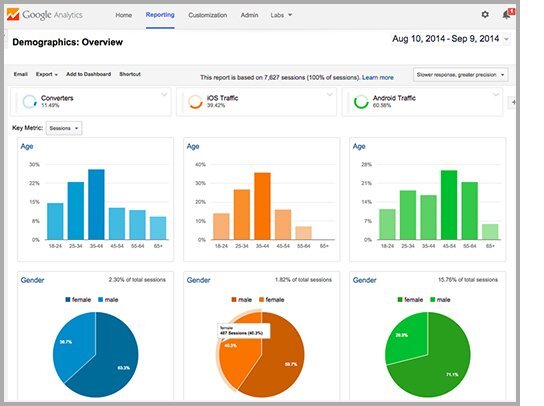Boost Performance and Success With Data Analytics
In today's data-driven landscape, services are significantly recognizing the critical function of data analytics in boosting operational performance and success. By methodically evaluating information, companies can uncover critical understandings that inform calculated choices, improve procedures, and tailor client experiences.
Recognizing Data Analytics
In today's data-driven landscape, recognizing information analytics is necessary for organizations aiming to boost functional efficiency and drive earnings. Information analytics includes the methodical computational evaluation of data collections to uncover patterns, correlations, and insights that notify decision-making. By using various techniques, such as statistical analysis, maker learning, and predictive modeling, organizations can transform raw information right into workable knowledge.
The procedure typically starts with data collection, where pertinent details is gathered from numerous resources, consisting of transactional databases, customer interactions, and market fads. This information is after that cleansed and arranged to guarantee precision and uniformity. As soon as the information is prepared, logical devices and software are utilized to explore and imagine the info, allowing stakeholders to determine anomalies and trends.
Ultimately, understanding information analytics encourages companies to make enlightened choices based on empirical evidence as opposed to instinct. It promotes targeted methods that can maximize source allowance, enhance client fulfillment, and improve total efficiency. As services progressively recognize the worth of data-driven understandings, a solid grip of information analytics ends up being an important proficiency for leaders and teams alike, placing them for sustained success in an affordable setting.

Secret Benefits for Organizations
Companies that leverage data analytics can open a wide variety of advantages that substantially enhance their procedures and profitability. Among the primary advantages is improved decision-making. Information analytics offers workable insights acquired from real-time data, enabling businesses to make enlightened choices that straighten with market demands and customer choices.

Additionally, data analytics cultivates enhanced consumer experiences. By comprehending customer habits and choices, businesses can tailor their offerings, causing raised complete satisfaction and commitment. This tailored method often causes greater conversion rates and repeat service.
Additionally, data analytics makes it possible for businesses to recognize emerging chances and trends. By remaining ahead of the contour, companies can profit from brand-new markets and advancements before their competitors.
Executing Data-Driven Techniques
Successful execution of data-driven methods needs an extensive understanding of both readily available data and business objectives resources. Organizations should first specify their goals clearly, making certain placement between information efforts and tactical purposes. This clarity makes it possible for groups to concentrate on pertinent metrics and insights that drive decision-making.
Following, companies need to examine their existing data facilities. This involves examining data high quality, ease of access, and assimilation abilities. Top quality information is vital for exact analysis, as inadequate data can bring about misguided methods and wasted resources. Organizations has to develop procedures for information collection, cleaning, and management to preserve data honesty.
Furthermore, promoting a data-driven society is critical. Employees whatsoever levels must be urged to utilize data in their daily operations. Training programs and workshops can boost information literacy, empowering staff to make informed decisions based on analytical insights.
Tools and Technologies Summary
A robust suite of tools and technologies is vital for companies intending to harness the full possibility of data analytics. These tools promote the collection, handling, and visualization of information, allowing organizations to acquire workable insights.
At the foundational level, information monitoring platforms such as SQL databases and NoSQL systems offer effective data storage and access capabilities. For data processing and evaluation, programs languages like Python and R, together with structures such as Apache Spark, enable complex calculations and machine learning applications.
Visualization devices, including Tableau and Power BI, transform raw information right into intuitive visual styles, making insights accessible to stakeholders in all click site degrees. Additionally, cloud-based systems like Google Cloud and AWS use scalable storage and handling options, accommodating the expanding volumes of data companies experience.
For advanced analytics, anticipating modeling and AI-driven solutions are increasingly embraced, allowing firms to anticipate fads and improve decision-making procedures. Integrating these tools right into existing process is paramount; companies that successfully take advantage of this technology can significantly boost operational performance and drive success. Hence, spending in the right devices and technologies is a strategic imperative for any type of data-driven company.
Study of Success
Leveraging data analytics has led countless companies to achieve amazing enhancements in performance and profitability. One significant instance is a large retail chain that executed predictive analytics to enhance stock administration. By examining historic sales information and consumer fads, the firm lowered excess inventory by 30%, leading to see this page significant cost savings and improved capital.
An additional example can be located in the manufacturing industry, where a leading vehicle maker made use of information analytics to improve its production processes. By keeping track of device performance in real-time, the organization identified bottlenecks and inefficiencies, causing a 20% rise in total devices efficiency (OEE) This not only boosted manufacturing prices however also minimized downtime and upkeep prices.

These instance official source studies show how information analytics can drive critical decision-making, maximize processes, and inevitably enhance both performance and success throughout various markets.
Verdict
In final thought, the integration of data analytics right into company operations provides substantial possibilities for improving effectiveness and productivity. By systematically assessing data, organizations can determine inadequacies, maximize client experiences, and make notified choices.
In today's data-driven landscape, comprehending data analytics is crucial for companies intending to enhance operational performance and drive earnings. Data analytics involves the organized computational evaluation of data collections to discover patterns, correlations, and understandings that notify decision-making. Data analytics gives workable insights acquired from real-time data, allowing businesses to make enlightened options that line up with market demands and customer choices.
High-quality data is vital for precise analysis, as poor information can lead to misguided strategies and squandered resources. Organizations needs to establish processes for data collection, cleaning, and monitoring to keep information honesty.